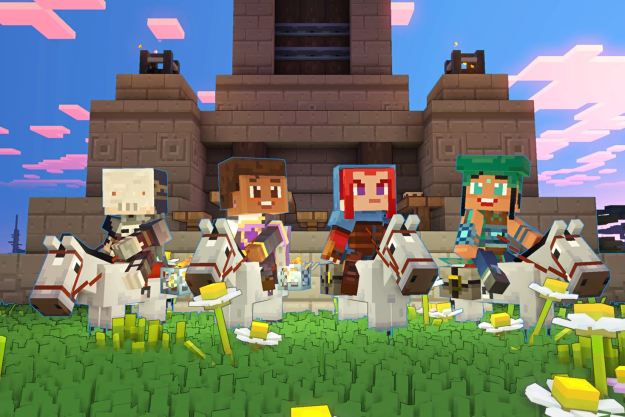As gamers debate whether Xbox Game Pass burnout is actually here, Sony is launching its own enhanced PlayStation Plus subscription service on PS4 and PS5. New higher PlayStation Plus tiers started rolling out in Asia on May 23 and will make their way to the rest of the world over the next month. Unfortunately, a couple of issues already seem to be plaguing PlayStation Plus Premium during its first days on the market.
From how much people have to pay for the service to how the retro games themselves play, customers are running into a slew of problems with Sony’s service. While it’s a rough start for PlayStation Plus Premium and its chances compared to the notable success of Xbox Game Pass, Sony’s project isn’t quite doomed.
A lacking game library
While this issue is subjective depending on how many games you’ve played and what you’re looking for out of this subscription service, the launch library for PlayStation Plus Premium has been largely painted as underwhelming by fans. Even if it’s a bit better than what a blog post earlier this month initially suggested, it mainly contains PS4 games a lot of hardcore PlayStation fans like myself have already paid for and played. Some questionable games like Balan Wonderworld and Mighty No. 9 also stand out even more thanks to the limited selection.
The PS1, PSP, and PS2 game lineups are thin at launch, with major franchises like Sly Cooper and Metal Gear Solid completely missing. Trophy support isn’t ubiquitous across all retro games, which is frustrating for trophy hunters. PS3 games are not natively emulated on the console; they stream from the cloud and don’t include DLC originally released for them, according to VGC.
While this differs from person to person, the PlayStation Plus Premium lineup is starting off on shaky ground compared to Xbox Game Pass, which already gets flack for whether it has a good month or not.
Problems playing games
Unfortunately, there aren’t just subjective problems with the library, as Sony actively seems to be releasing poor versions of classic PS1 games onto the service. According to VGC, the first-party PS1 games in the PlayStation Plus Deluxe tier — the highest tier in Southeast Asia where the service has started rolling out — are based on the PAL versions of each game, not the NTSC version. PAL PS1 games only run at a 50Hz refresh rate because they had to accommodate the dominant video format in places like Europe and Australia. Meanwhile, North American players experienced the NTSC versions of these PS1 games, which run at a 60Hz refresh rate.
If Sony uses the PAL versions of its PS1 games when the service expands to North America, then those retro games on the PlayStation Plus Premium tier will run slower than North American players experienced in the 1990s. We don’t know for sure if the North American version of the service will use the PAL versions just yet, but it’s still a worrying development as the PlayStation Classic also had this problem. Some technical issues in games like Oddworld: Abe’s Oddysee are also being reported by VGC, raising further questions about the quality of the classic PS1 ports. Playing retro games seems to be a rougher experience on PlayStation than trying original Xbox and 360 games on Xbox Game Pass, even if it’s nice that Sony finally acknowledged its back catalog of classics.

Upgrading memberships is messy
Players who bought lots of PlayStation Plus or PlayStation Now subscriptions at a discounted rate in hopes of converting them to higher-tiered subscriptions were met with disappointment on May 23. Sony reportedly requires players to pay the difference of their discount if they want to upgrade to the more expensive tiers. Couple this with the fact that you must upgrade for the rest of your current subscription, not just a few months or a year of Extra or Premium, and some players are having to pay much more than they expected to upgrade PlayStation Plus.
Yes, buying several years of PlayStation Plus or PS Now at a discounted rate in anticipation of the service for cheaper is gaming the system a bit. However, PlayStation’s decision to surcharge the fans that are prepared to embrace PlayStation Plus Premium in this way doesn’t feel like the best judgment call for a new service hoping to earn players’ trust.
Is PlayStation Plus Premium doomed?
Despite these issues, PlayStation Plus Premium isn’t doomed to fail.
Any new subscription service will have its fair share of problems, especially right out of the gate. Xbox Game Pass was not an overnight success; it had years to build up to become the popular (and sometimes controversial) subscription service it is today. The game library will improve over time as Sony makes more deals with companies for current-gen games and continues to port older PS1, PSP, and PS2 games to the service. They still have a chance to make sure it’s the NTSC versions of the games available in North America, so we aren’t playing slower versions of these classics. And once PlayStation Plus Premium’s launch is months or years behind us, these discount surcharges won’t matter to subscribers as much anymore.
Hopefully, Sony can learn from and correct these mistakes as PlayStation Plus Premium rolls out worldwide and subscribers utilize it for an extended period of time. If it does, PlayStation Plus Premium can be the Xbox Game Pass alternative that PlayStation users seem to want, rather than a rough first draft of something that Xbox is already doing pretty well.
Editors' Recommendations
- Helldivers 2 PC woes prove that PlayStation needs an online overhaul
- If you’re not using PlayStation Stars, you’re missing out
- PlayStation has a secret weapon up its sleeve: the Hero Project
- I was a PlayStation Portal hater. Now it’s one of my go-to gaming devices
- Fallout 4 is finally getting free Xbox Series X and PS5 upgrades



